Nakahara M. Geometry, Topology and Physics
Подождите немного. Документ загружается.

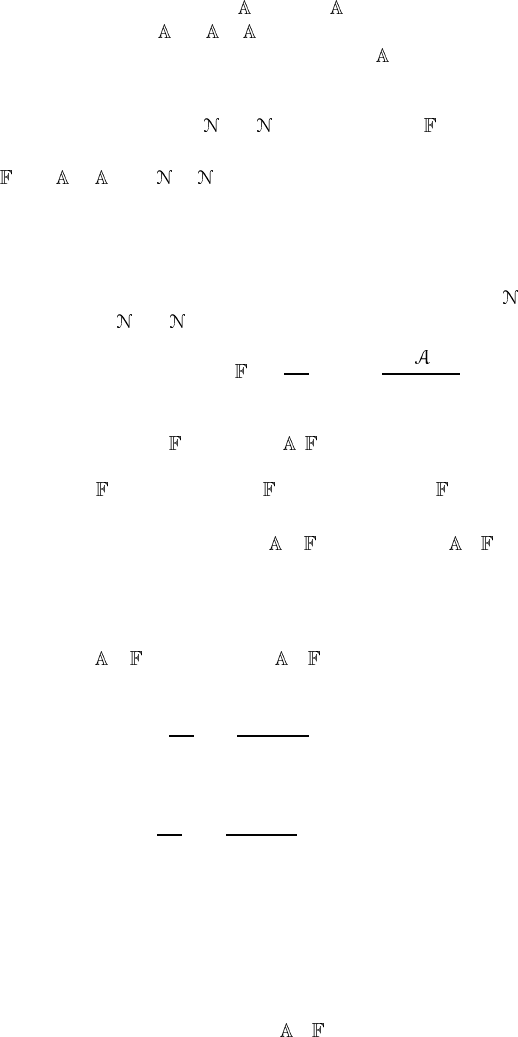
On the equator (t = s = 1), we have
N
= g
−1
(
S
+)g,where = d+d
θ
+d
t
(note that d
t
g = 0). Thus, ={
N
,
S
} defines a global connection on S
2
×S
m
.
Consider a Dirac operator i
/
∇
m+2
which couples to . The index theorem for
i
/
∇
m+2
is given by
ind i
/
∇
m+2
=
+
−
−
=
S
2
×S
m
ch
l+1
( ) (13.97)
where
= +
2
and
+
(
−
) is the number of + (−) chirality zero modes
of i
/
∇
m+2
(chirality is defined in an (m + 2)-space).
Alvarez-Gaum´e and Ginsparg (1984) have shown, using an adiabatic
perturbative computation, that each winding number m
i
must be ±1. Moreover,
the Dirac operator i
/
∇
m+2
has a zero mode at p
i
= (t
i
,θ
i
) with (m + 2)-
dimensional chirality χ = m
i
=±1. Then the total winding number =
m
i
is given by the index
+
−
−
.Nowwehave
ind i
/
∇
m+2
=
S
2
×S
m
ch
l+1
( ) =
1
2π
2π
0
dθ
∂w(
,θ)
∂θ
. (13.98)
We easily find the non-Abelian anomaly from (13.98) including the
normalization. Since ch
l+1
( ) = dQ
m+1
( , ),wehave
S
2
×S
m
ch
l+1
( ) =
D
2
×S
m
ch
l+1
(
N
) +
D
2
×S
m
ch
l+1
(
S
)
=
S
1
×S
m
[Q
m+1
(
N
,
N
)|
t=1
− Q
m+1
(
S
,
S
)|
s=1
].
(13.99)
From (11.118), we find that
Q
m+1
(
N
,
N
)|
t=1
− Q
m+1
(
S
,
S
)|
s=1
= Q
m+1
(g
−1
g, 0) +α
m
= (−1)
l
i
2π
l+1
l!
(m + 1)!
tr(g
−1
g)
m+1
+ α
m
. (13.100)
The index theorem is now given by
ind i
/
∇
m+2
= (−1)
l
i
2π
l+1
l!
(m + 1)!
S
1
×S
m
tr(g
−1
g)
m+1
. (13.101)
Theorem 10.7 states that
S
3
tr(g
−1
dg)
3
yields the winding number of the map
g : S
3
→ SU(2). In the same manner, (13.101) represents the winding number of
the map g : S
m+1
→ G and is classified by π
m+1
(G) (note that S
1
∧S
m
= S
m+1
).
Finally, we show that the non-Abelian anomaly should be identified with
Q
1
m
. We first note that
S
1
×S
m
Q
m+1
(
S
,
S
) = 0
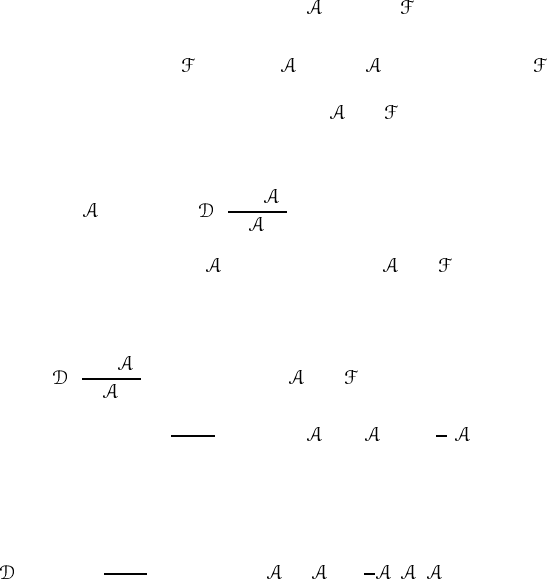
since the integrand is independent of dθ and, thus, cannot be a volume element of
S
1
× S
m
.Thenwehave
ind i
/
∇
m+2
=
S
1
×S
m
Q
m+1
(
g(θ)
+ ω,
g(θ)
) (13.102)
where ω = g
−1
d
θ
g and
g(θ)
= d
g(θ)
+ (
g(θ)
)
2
= g(θ )
−1
g(θ ).
If the integrand in (13.102) is expanded in ω, only the term linear in dθ
contributes to the integral. This term Q
1
m
(ω,
g(θ)
,
g(θ)
) is proportional to
dθ ∧ (volume element in S
m
) and, hence, is a volume element of S
1
× S
m
.We
now have
δ
ω
W [ ]=
S
m
tr ω
µ
δW [ ]
δ
µ
= id
θ
w(θ, ) = 2πi
S
m
Q
1
m
(ω,
g(θ)
,
g(θ)
). (13.103)
The explicit form of Q
1
m
is given by (13.82). For m = 4, we find that
tr ω
µ
δW [ ]
δ
µ
= 2πi
S
4
Q
1
4
(ω,
g(θ)
,
g(θ)
)
=
1
24π
2
S
4
tr ω d
g(θ)
d
g(θ)
+
1
2
(
g(θ)
)
3
. (13.104)
Putting θ = 0 (g = e), we reproduce the anomalous divergence
µ
j
µ
α
=
1
24π
2
tr T
α
κλµν
∂
κ
λ
∂
µ ν
+
1
2
λ µ ν
(13.105)
which is in agreement with (13.56). The present method guarantees that the
WZ condition yields the correct result. Moreover, it reproduces the anomalous
divergence including the normalization which cannot be fixed by the WZ
condition alone.
13.6 The parity anomaly in odd-dimensional spaces
So far, we have been working in even-dimensional spaces. One of the reasons
for this is that SO(2l + 1) has real or pseudo-real spinor representations but no
complex representations, hence no gauge anomaly is expected. However, we
can show that gauge theories in odd-dimensional spaces have a different kind
of anomaly called the ‘parity anomaly’, in which the parity symmetry of the
classical action is not maintained through quantization. It should be noted that
the parity anomaly in 2l + 1 dimensions is related to the Abelian anomaly in
2l + 2 dimensions as was pointed out by Alvarez-Gaum´e et al (1985).
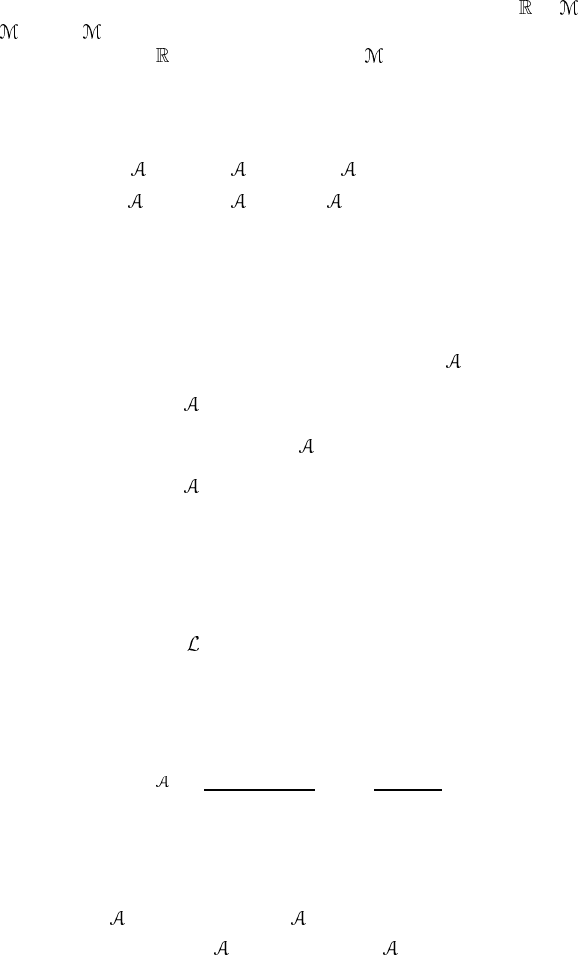
13.6.1 The parity anomaly
Let M be a (2l + 1)-dimensional Riemannian manifold. We distinguish one
dimension from the others; that is we assume that M is of the form
× or
S
1
× ,where is a 2l-dimensional compact manifold without a boundary. We
denote the coordinate of
or S
1
by t while that of is denoted by x. The index
0 denotes the component in t-space while µ denotes that in x-space. For example,
the components of the γ -matrices are {γ
0
,γ
µ
(1 ≤ µ ≤ 2l)}.
Define the ‘parity’ operation P by
0
(t, x) →
P
0
(t, x) =−
0
(−t, x )
µ
(t, x) →
P
µ
(t, x) =
µ
(−t, x )
ψ(t, x ) → ψ
P
(t, x) = iγ
0
ψ(−t, x )
¯
ψ(t, x) →
¯
ψ
P
(t, x) = i
¯
ψ(−t, x)γ
0
.
The classical action is invariant under the parity operation,
dt dx
¯
ψi
/
∇ψ →−
dt dx
¯
ψ(−t, x)γ
0
i[γ
0
(∂
0
−
0
(−t, x ))
+ γ
µ
(∂
µ
+
µ
(−t, x ))]γ
0
ψ(−t, x )
=
dt dx
¯
ψ(t, x)i[γ
0
(∂
0
+
0
(t, x))
+ γ
µ
(∂
µ
+
µ
(t, x))]ψ(t, x)
where we put t →−t in the final line. Let us see whether this invariance is
observed by the effective action. The effective action is given by the regularized
product of the eigenvalues of i
/
∇.WeemploythePauli–Villars regularization to
regulate the product, that is
reg
≡¯χi
/
∇χ + iM ¯χχ (13.106)
is added to the original Lagrangian. The Pauli–Villars regulator χ is a spinor
which obeys bosonic statistics and the limit M →∞is understood. The
regularized determinant is
e
−W [ ]
=
det i
/
∇
det(i
/
∇+iM)
=
i
λ
i
λ
i
+ iM
(13.107)
where we noted that χ is bosonic. Here λ
i
is the i th eigenvalue of i
/
∇; i
/
∇ψ
i
=
λ
i
ψ
i
. Under the parity operation, eigenvalues change sign,
i[γ
0
(∂
0
−
0
(−t, x )) + γ
i
(∂
i
+
i
(−t, x ))]iγ
0
ψ
i
(−t, x )
= iγ
0
[γ
0
(−∂
τ
−
0
(τ, x )) − γ
i
(∂
i
+
i
(τ, x ))]iψ(τ, x)
=−λ
i
iγ
0
ψ
i
(τ, x )
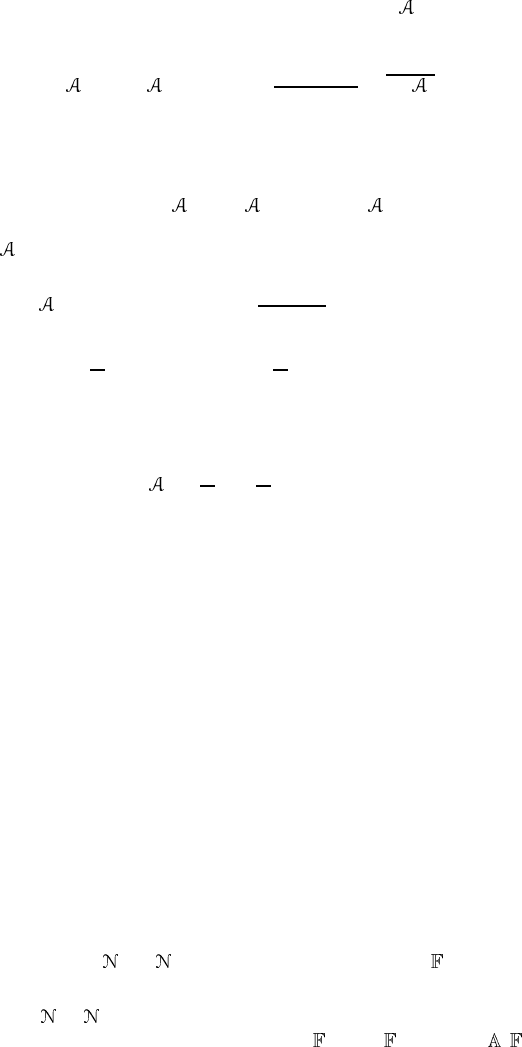
where τ =−t. This shows that the effective action W [
] transforms under the
parity operation P as
W [
]→W [
P
]=−ln
−λ
i
−λ
i
+ iM
=
W [ ] (13.108)
where the bar denotes complex conjugation. (13.108) shows that the imaginary
part of W is identified with the parity-violating part
W [
]−W [
P
]=2ImW [ ]. (13.109)
Im W [
] is given by the η-invariant defined in section 12.8. In fact,
Im W [
]= lim
M→∞
Im
−
i
ln
λ
i
λ
i
+ iM
= lim
M→∞
i
tan
−1
(M/λ
i
)
=
π
2
λ>0
1 −
λ<0
1
=
π
2
η. (13.110)
Thus, the Pauli–Villars regulator gives a regularized form for the η-invariant. We
finally have
Im W [
]=
π
2
η =
π
2
lim
s→0
i
sgnλ
i
|λ
i
|
−2s
(13.111)
where the prime indicates the omission of zero modes.
13.6.2 The dimensional ladder: 4–3–2
It is remarkable that the parity anomaly (13.110) is closely related to the chiral
anomaly in a (2l +2)-dimensional space (Alvarez-Gaum´e et al 1985). Following
Forte (1987), we look at the dimensional ladder,
four-dimensional Abelian anomaly
↓
three-dimensional parity anomaly (13.112)
↓
two-dimensional non-Abelian anomaly.
We take M
4
= S
2
× S
2
as a four-dimensional space. The Abelian anomaly
is given by the index
ind i
/
∇
4
=
+
−
−
=
S
2
×S
2
∂
µ
j
µ
5
=
S
2
×S
2
ch
2
( ). (13.113)
As before,
+
(
−
) is the number of positive (negative) chirality zero modes.
Let Q
3
be the Chern–Simons form of ch
2
( );ch
2
( ) = dQ
3
( , ).Then
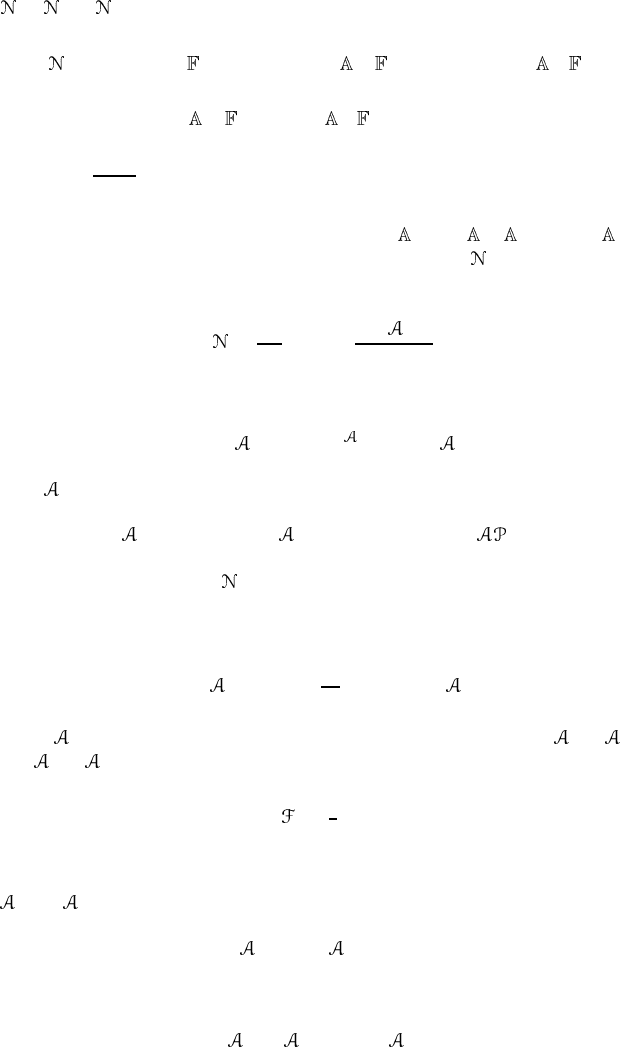
≡
+
−
−
is given by
=
S
2
×S
2
ch
2
( ) =
U
N
×S
2
dQ
3
(
N
,
N
) +
U
S
×S
2
dQ
3
(
S
,
S
)
=
S
1
×S
2
[Q
3
(
N
,
N
) − dQ
3
(
S
,
S
)]
=
1
24π
2
S
1
×S
2
tr(g
−1
dg)
3
(13.114)
where g is the gauge transformation connecting
N
and
S
;
N
= g
−1
(
S
+
d + d
θ
)g. In the previous section, we have shown that also represents the
non-Abelian anomaly
=
1
2π
2π
0
dθ
∂w(
,θ)
∂θ
(13.115a)
where w is defined by
det i
ˆ
D(
g(θ)
) = e
iw( ,θ)
det i
ˆ
D( ). (13.115b)
Here
is the reference gauge potential and
g(θ)
= g
−1
(x ,θ)( + d)g(x,θ)i
ˆ
D =
/
∂+
+
.
Next, we show that
is also related to the parity anomaly in three-
dimensional space. Let i
/
∇
3
be a three-dimensional Dirac operator and define
a four-dimensional Dirac operator by
i
/
D
4
[ ]≡iσ
1
⊗ I
∂
∂t
+ σ
2
⊗ i
/
∇
3
[
t
] (13.116)
where
t
is a one-parameter family of gauge potentials interpolating
0
=
t=0
and
1
=
t=1
. The Atiyah–Patodi–Singer index theorem (section 12.8) is
ind i
/
D
4
=−
S
2
×S
1
×I
ch
2
( ) +
1
2
[η(t = 1) − η(t = 0)] (13.117)
where we have noted that the Dirac genus
ˆ
A is trivial on S
2
× S
1
× I . Suppose
0
and
1
are related by a gauge transformation,
1
= g
−1
(
0
+ d)g (13.118a)
and consider an interpolating potential
t
≡ t
1
+ (1 − t)
0
.(13.118b)
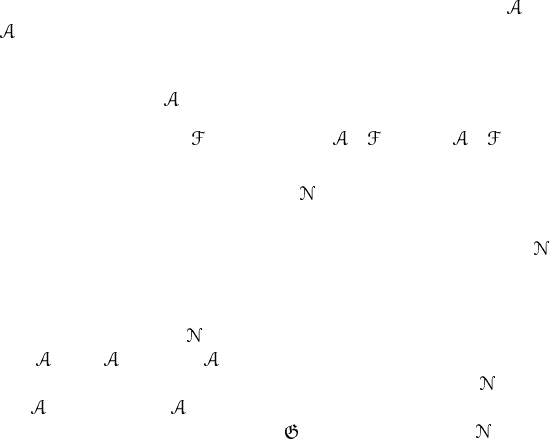
Since the spectrum of i
/
∇
3
is gauge invariant, in particular Spec i
/
∇
3
(
0
) =
Spec i
/
∇
3
(
1
),theη-invariant is also gauge invariant.
6
Then η(t = 0) = η(t = 1)
and the APS index theorem (13.117) yields
spectral flow = ind i
/
D
4
(
t
)
=
S
2
×S
2
ch
2
( ) =
S
1
×S
2
[Q
3
(
1
,
1
) − Q
3
(
0
,
0
)]
=
S
1
×S
2
Q
3
(g
−1
dg, 0) = . (13.119)
Thus, the spectral flow of the three-dimensional theory is given by the index
.
In summary, the map g : S
2
×S
1
→ G is understood in three different ways:
(1) g is a transition function at the boundary of two patches of a G bundle over
S
2
× S
2
. It yields the index of the four-dimensional Abelian anomaly.
(2) Suppose
0
and
1
= g
−1
(
0
+ d)g are gauge potentials on S
2
× S
1
.
The gauge transformation function g measures the spectral flow
between
Spe i
/
∇
3
(
0
) and Spe i
/
∇
3
(
1
).
(3) g : S
2
× S
1
→ G induces a map S
1
→ , the winding number of which
is identified with the non-Abelian anomaly in two-dimensional space.
Thus, we have obtained the ‘dimensional ladder’ 4–3–2. The extension to higher
dimensions is obvious.
6
Note that there is no gauge anomaly in odd-dimensional spaces.

14
BOSONIC STRING THEORY
In the present chapter, we study the one-loop amplitude of bosonic string
theory. Our example is the simplest one: closed, oriented bosonic strings in 26-
dimensional Euclidean space.
1
The action is the Polyakov action
S =
1
2π
g
d
2
ξ
√
γγ
αβ
∂
α
X
µ
∂
β
X
µ
−
λ
4π
g
d
2
ξ
√
γ (14.1)
where
g
is a Riemann surface with genus g. The second term is proportional
to the Euler characteristic χ = 2 − 2g and, hence, determines the relative ratio
of multi-loop amplitudes; the g-loop amplitude is proportional to exp(−λg).We
have not written down the possible counter terms explicitly.
In the following sections, we work out the path integral formalism of bosonic
strings. We first develop the necessary mathematical tools, namely differential
geometry on Riemann surfaces. Then the path integral expression for the vacuum
amplitude is written down. As an example, we compute the one-loop vacuum
amplitude. Our exposition is based on D’Hoker and Phong (1986), Polchinski
(1986) and Moore and Nelson (1986). There are many surveys of these topics,
for example, Alvarez-Gaum´e and Nelson (1986), Bagger (1987), D’Hoker and
Phong (1988) and Weinberg (1988).
14.1 Differential geometry on Riemann surfaces
Riemann surfaces are real two-dimensional manifolds without boundary. In our
study of topology and geometry, we referred to them in various places. Here
we summarize the basic facts on Riemann surfaces, which will make this chapter
self-contained. We also introduce several new aspects of Riemann surfaces, which
provide enough background for the study of bosonic string amplitudes.
14.1.1 Metric and complex structure
Let
g
be a Riemann surface of genus g. Itwasshowninexample7.9thatwe
may introduce, in any chart U ,theisothermal coordinates (ξ
1
,ξ
2
) in which the
metric is conformally flat:
g = e
2σ(ξ)
(dξ
1
⊗ dξ
1
+ dξ
2
⊗ dξ
2
). (14.2)
1
The reason for D = 26 will be clarified in section 14.2.

Introduce the complex coordinates
z = ξ
1
+ iξ
2
¯z = ξ
1
− iξ
2
. (14.3)
Forms and vectors are spanned by
dz = dξ
1
+ id ξ
2
d¯z = dξ
1
− id ξ
2
(14.4a)
∂
z
=
1
2
∂
∂ξ
1
− i
∂
∂ξ
2
∂
¯z
=
1
2
∂
∂ξ
1
+ i
∂
∂ξ
2
. (14.4b)
In terms of the complex coordinates, the metric takes the form
g =
1
2
e
2σ(z,¯z)
[dz ⊗ d¯z + d¯z ⊗ dz]. (14.5)
The components of g are
g
z ¯z
= g
¯zz
=
1
2
e
2σ
g
zz
= g
¯z¯z
= 0 (14.6a)
g
z ¯z
= g
¯zz
= 2e
−2σ
g
zz
= g
¯z ¯z
= 0. (14.6b)
Let V be another chart of
g
such that U ∩ V =∅.Let(w, ¯w) be the
complex coordinates in V . The metric in V is
g = e
2σ
(w, ¯w)
dw ⊗ d ¯w. (14.7)
The two expressions (14.5) and (14.7) should agree on U ∩ V ,
e
2σ(z,¯z)
dz ⊗ d¯z = e
2σ
(w, ¯w)
dw ⊗ d ¯w.
Since
dw ⊗ d ¯w =[(∂w/∂z) dz + (∂w/∂ ¯z)d¯z]⊗[(∂ ¯w/∂z) dz + (∂ ¯w/∂ ¯z)d¯z]
∝ dz ⊗ d¯z
we must have ∂w/∂¯z = ∂ ¯w/∂z = 0. [Another possibility, ∂w/∂z = ∂ ¯w/∂ ¯z = 0
is ruled out if (z, ¯z) and (w, ¯w) define the same orientation.] Thus, it follows that
w = w(z) ¯w =¯w(¯z) (14.8)
which verifies that
g
is a complex manifold. We also have
e
2σ(z,¯z)
= e
2σ
(w, ¯w)
|∂w/∂z|
2
. (14.9)
14.1.2 Vectors, forms and tensors
Let M =
g
. The components of vector fields V
z
∂/∂z ∈ TM
+
and V
¯z
∂/∂ ¯z ∈
TM
−
transform as
V
w
= (∂w/∂z)V
z
V
¯w
= (∂ ¯w/∂ ¯z)V
¯z
. (14.10)
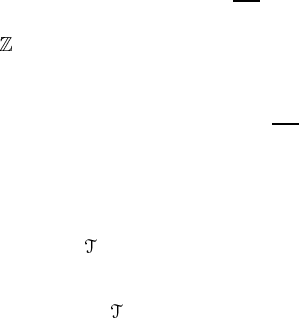
The components of differential forms w
z
dz ∈
1,0
(M) and w
¯z
d¯z ∈
0,1
(M)
transform as
ω
w
= (∂w/∂ z)
−1
ω
z
ω
¯w
= (∂ ¯w/∂ ¯z)
−1
ω
¯z
. (14.11)
These are identified with sections of the holomorphic (anti-holomorphic) line
bundles over M =
g
, for which the transition functions are holomorphic (anti-
holomorphic). The metric provides a natural isomorphism between TM
+
and
0,1
(M) through
ω
¯z
= g
¯zz
V
z
, V
z
= g
z ¯z
ω
¯z
. (14.12)
Similarly, TM
−
is isomorphic to ω
1,0
(M):
ω
z
= g
z ¯z
V
¯z
, V
¯z
= g
¯zz
ω
z
. (14.13)
In general, given an arbitrary tensor, the metric allows us to trade all the ¯z-indices
for z-indices. It is easy to see that
T
q
1
./,-
z...z
q
2
./,-
¯z...¯z
z...z
,-./
p
1
¯z...¯z
,-./
p
2
→ T
q
1
+p
2
./,-
z...z
z...z
,-./
p
1
+q
2
= (g
z ¯z
)
q
2
(g
z ¯z
)
p
2
T
q
1
./,-
z...z
q
2
./,-
¯z...¯z
z...z
,-./
p
1
¯z...¯z
,-./
p
2
. (14.14)
This correspondence is an isomorphism. For example, observe that
T
z ¯z
¯z
→ g
z ¯z
g
z ¯z
T
z ¯z
¯z
= T
z
z
z
.
Thus, it is only necessary to consider tensors with pure z-indices. For these
tensors, we assign the helicity. Since T has z-indices only, it transforms under
z → w as
T →
∂w
∂z
n
T (14.15)
where n ∈
is given by the number of upper z-indices minus the number of lower
z-indices. For example,
T
zz
z
→ T
ww
w
=
∂w
∂z
T
zz
z
.
All that matters is the difference between the number of upper indices and the
number of lower indices. The tensor T
z
z
is left invariant under z → w and is
regarded as a scalar. The number n is called the helicity. The set of helicity-n
tensors is denoted by
n
:
n
≡{T
q
./,-
z...z
z...z
,-./
p
|q − p = n}. (14.16)
The helicity characterizes the irreducible representation of U(1) = SO(2).
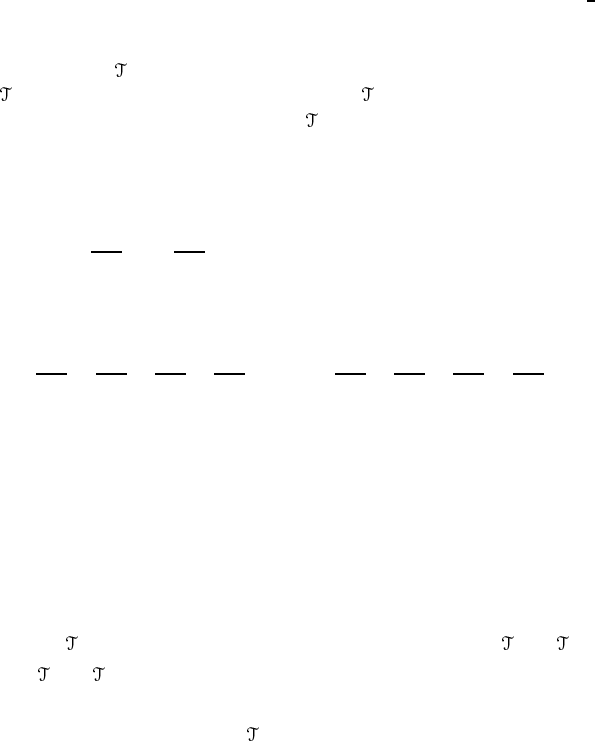
Sofarwehaveassumedn is an integer. It can be shown that n =
1
2
corresponds to the spinor field on
g
. In fact, the existence of spinors on the
Riemann surfaces is guaranteed by the triviality of the second Stiefel–Whitney
class of
g
.Theset
1
is identified with the holomorphic line bundle K over
g
.
Then
1/2
is the square root of K : S
2
+
= K =
1
where S
+
is the positive-
chirality spin bundle. Similarly, we have
−1
=
¯
K = S
2
−
where S
−
is the
negative-chirality spin bundle.
2
Example 14.1. In real indices, the helicity ±1 vectors are given by V
1
±iV
2
.This
follows since
V
1
∂
∂ξ
1
+ V
2
∂
∂ξ
2
= (V
1
+ iV
2
)∂
z
+ (V
1
− iV
2
)∂
¯z
.
We put V
z
= V
1
+ iV
2
and V
¯z
= V
1
− iV
2
V
z
. The helicity ±2 tensors are
T
11
± iT
22
,whereT is a symmetric traceless tensor of rank two. In fact, we find
T
11
∂
∂ξ
1
⊗
∂
∂ξ
1
−
∂
∂ξ
2
⊗
∂
∂ξ
2
+ T
12
∂
∂ξ
1
⊗
∂
∂ξ
2
+
∂
∂ξ
2
⊗
∂
∂ξ
1
= 2(T
11
+ iT
12
)∂
z
⊗ ∂
z
+ 2(T
11
− iT
12
)∂
¯z
⊗ ∂
¯z
.
Clearly T
zz
= 2(T
1
+ iT
12
) has helicity +2andT
¯z¯z
= 2(T
11
− iT
12
) has
helicity −2 (note that g
z ¯z
g
z ¯z
T
¯z¯z
= T
zz
).
14.1.3 Covariant derivatives
The only non-vanishing Christoffel symbols of
g
are (see (8.69))
z
zz
= g
z ¯z
∂
z
g
z ¯z
= 2∂
z
σ
¯z
¯z¯z
= g
¯zz
∂
¯z
g
¯zz
= 2∂
¯z
σ. (14.17)
For tensors in
n
, we define two kinds of covariant derivative: ∇
z
(n)
:
n
→
n+1
and ∇
(n)
z
:
n
→
n−1
.Let
T
q
./,-
z...z
z...z
,-./
p
∈
n
(q − p = n).
We define
∇
z
(n)
T
z...z
z...z
= g
z ¯z
∇
¯z
T
z...z
z...z
= g
z ¯z
[∂
¯z
+ (q − p)
z
¯zz
]T
z...z
z...z
= g
z ¯z
∂
¯z
T
z...z
z...z
(14.18a)
∇
(n)
z
T
z...z
z...z
=∇
z
T
z...z
z...z
=[∂
z
+ (q − p)
z
zz
]T
z...z
z...z
= (∂
z
+ 2n∂
z
σ)T
z...z
z...z
. (14.18b)
2
We use S
±
, instead of
±
, to denote the spin bundles. The symbol
±
is reserved for Laplacians.
